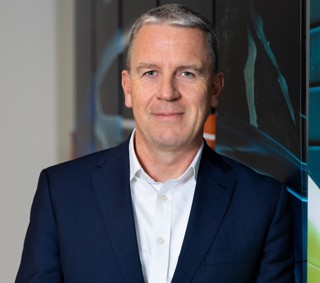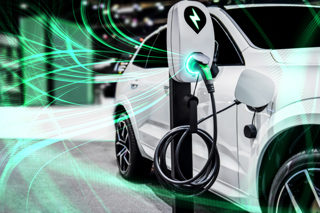Offering car-buyers a seamless, end-to-end digital experience is vital for any business wishing to prosper in the automotive sector.
Margarine, eggs and cornflakes were the first things to ever be sold online. But who made that first purchase? A hip, tech-savvy, early adaptor, digital native hanging out in a New York loft apartment in the mid-90s presumably.
Not quite. One of the first ecommerce adopters was a 72-year-old British grandmother called Jane Snowball.
She used computer technology called Videotex, which linked her television to her telephone, enabling her to place an order at her local Tesco in Gateshead.
And she did that in 1984. Admittedly, Mrs Snowball paid cash for her groceries when they arrived, so it was a world away from the rapidly evolving ecommerce world with fully encrypted online payment as we understand it now.
2020's tech acceleration
Fast forward 37 years and look how far we’ve come. Today, the global ecommerce market is valued in trillions of dollars.
As we all know, it has surged even more to COVID-19, with Forbes estimating that the pandemic has accelerated ecommerce growth by four to six years. And nowhere is this more acutely evident than in the automotive sector.
In 2020, new and used car online purchases made through franchised retailers using GForces platform - NetDirector Auto-e - increased by a staggering 1,228%.
More than £500m-worth of cars were sold using our technology last year and we expect car sales made through our platform to double during 2021, before growing by a further quarter in 2022.
As with many other industries, the pandemic has accelerated the shift to online, in a very traditional automotive sales market that was ripe for disruption.
From the data we have gathered, it’s crystal clear that customer trust levels when using digital technology are increasing daily, as is their willingness to make large ticket purchases, such as cars, online.
Naturally, they have appreciated the ease and simplicity, not to mention the personal safety, that ecommerce brings, particularly in these uncertain COVID-19 times.
However, what is interesting with the car industry is that we firmly believe there was latent demand there all along.
Often the missing key ingredient was the lack of easy-to-use, seamless systems for consumers to interact and transact with.
The pandemic has been the catalyst for change, and we are proud to have supported so many of our customers in adapting to the evolving automotive retail landscape.
If an online purchaser’s experience is a positive one, they will return time and again, with retailers reaping the brand loyalty and spend as a result.
Online car buying is no longer just a trend, it is fast becoming the new normal for sourcing your next car.
Seamless tech means 'survival'
Of course, it is vital for car brands and retailers to be able to offer the customer a complete digital journey.
We’re not just talking about the actual sale – personalised, immersive walkaround videos of the product on offer, part exchange, finance, options selection, warranty, delivery and collection must all be contained within the package.
Any organisation which cannot offer such an interactive and seamless, end-to-end digital purchase experience will simply not survive in the long-term.
Even if everyone on the planet could magically have a vaccination tomorrow, digital car sales are here to stay. And anyone not on the digital journey needs to evolve with the times. And fast.
So, does this mean the end of the traditional physical car dealership? Absolutely not, those operating prosperously now have fully embraced the integration of ‘bricks and clicks’, and those wishing to thrive in the future can take the same approach.
Many successful retailers are already blending the physical and virtual worlds. Take Tesco for example and their ‘Scan as you shop’.
You pop into a store, scan your Clubcard, pick up a scanner, then shop, bag and checkout at your own pace, in control of your personalised shopping, and budget, experience on your own terms.
So, although you’re in a traditional store, you’re still engaging with a digital experience.
It’s quick, seamless, convenient, and pretty cool to use too. But let’s not forget Mrs Snowball, she was there way ahead of all of us.
Author: Tim Smith, chief commercial officer, GForces



















Login to comment
Comments
No comments have been made yet.